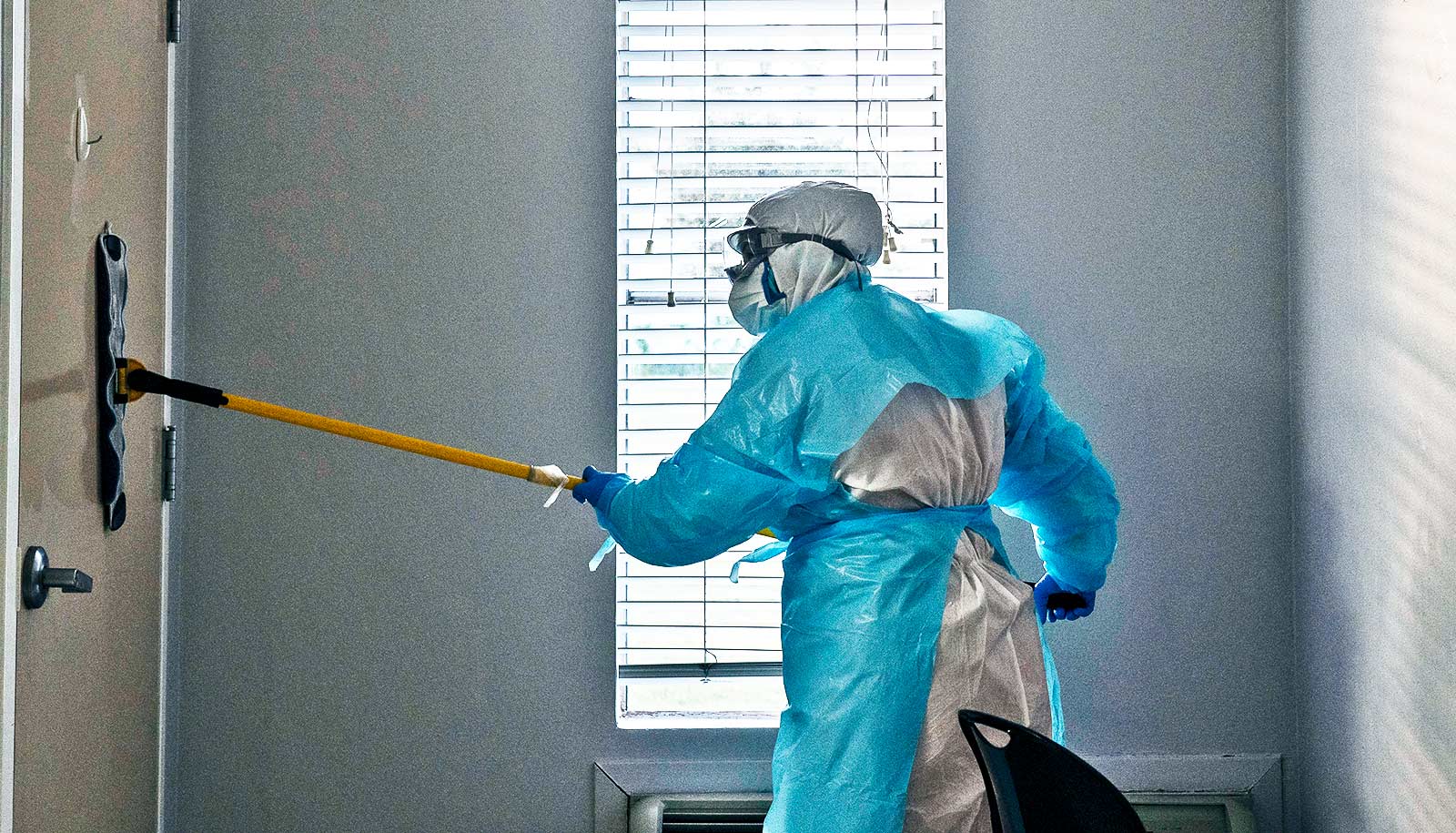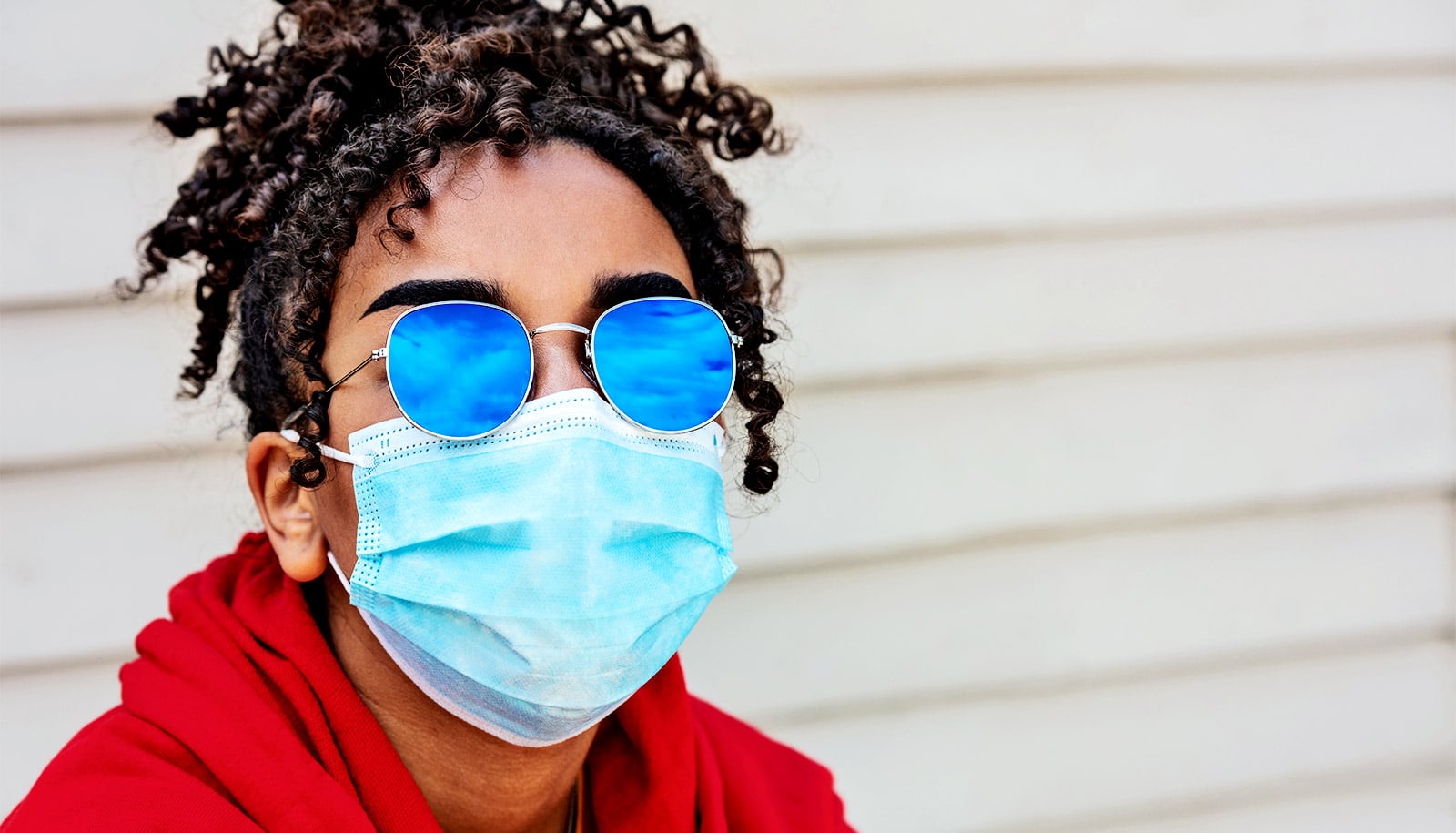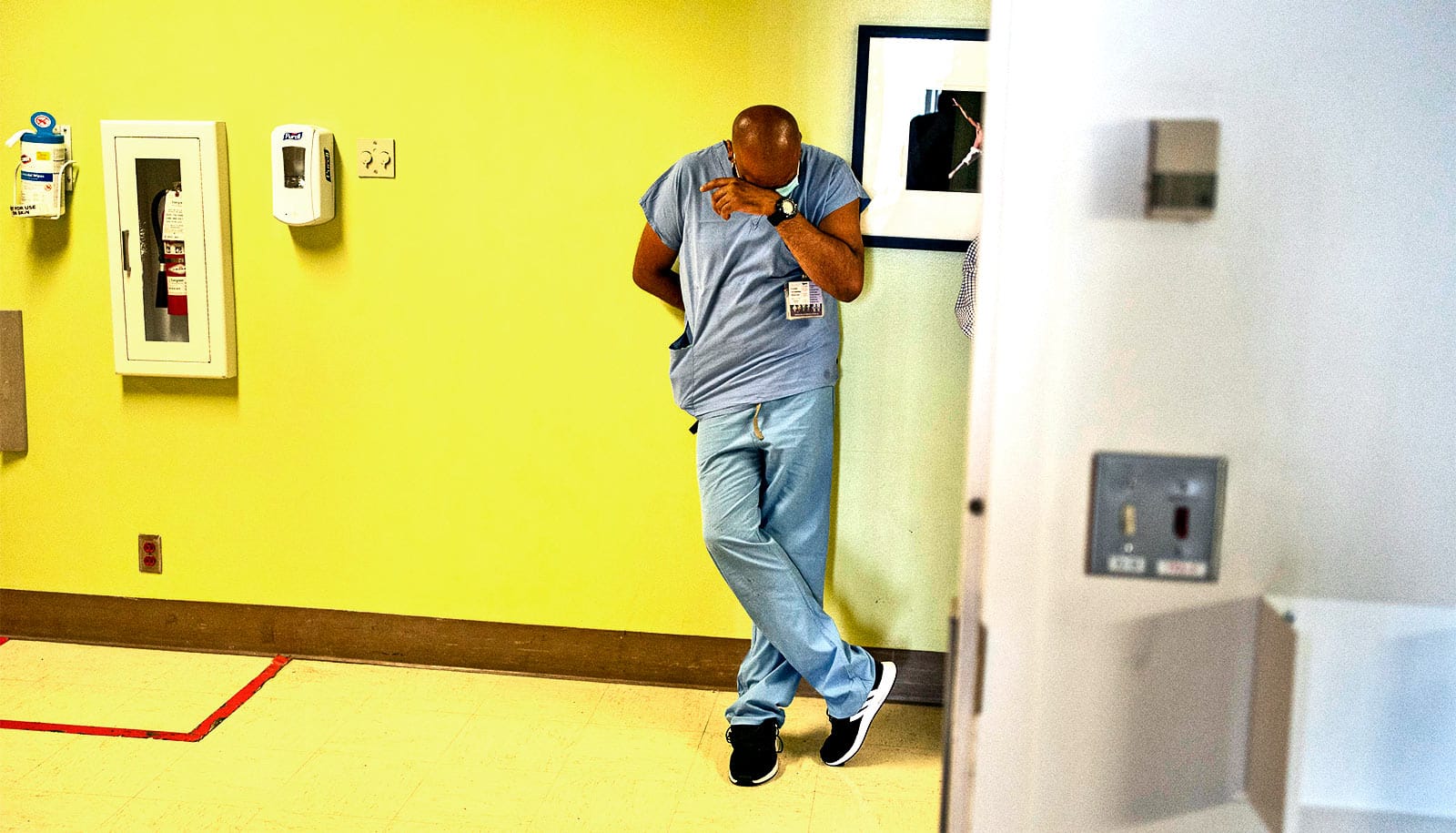Hospital rooms where COVID-19 patients received treatment have little to no active virus contamination on surfaces, according to a new study.
The findings, which add to the body of research on how the pandemic respiratory virus spreads, indicate that contaminated surfaces in the hospital environment are unlikely to be a source of indirect transmission of the virus.
“Early on in the pandemic, there were studies that found that SARS-CoV-2 could be detected on surfaces for many days,” says senior author Deverick Anderson, professor in the department of medicine at Duke University. “But this doesn’t mean the virus is viable. We found there is almost no live, infectious virus on the surfaces we tested.”
Anderson and colleagues, working under the CDC Prevention Epicenters Program, tested a variety of surfaces in the hospital rooms of 20 COVID patients at Duke University Hospital over several days of hospitalization, including on days 1, 3, 6, 10, and 14.
They collected samples from the patients’ bedrail, sink, medical prep area, room computer, and exit door handle. They collected a final sample at the nursing station computer outside the patient room.
PCR testing found that 19 of 347 samples gathered were positive for the virus, including nine from bedrails, four from sinks, four from room computers, one from the medical prep area, and one from the exit door handle. All nursing station computer samples were negative.
Of the 19 positive samples, most (16) were from the first or third day of hospitalization.
The researchers screened all 19 positive samples for infectious virus via cell culture with only one sample, obtained on day three from the bedrails of a symptomatic patient with diarrhea and a fever, demonstrating the potential to be infectious.
“While hospital rooms are routinely cleaned, we know that there is no such thing as a sterile environment,” Anderson says. “The question is whether small amounts of viral particles detected on surfaces are capable of causing infections. Our study shows that this is not a high-risk mode of transmission.”
The findings reinforce the understanding that SARS-CoV-2 primarily spreads through person-to-person encounters via respiratory droplets in the air, Anderson says. He notes that people should concentrate on known anti-infection strategies such as masking and socially distancing to mitigate exposures to airborne particles.
The study appears in the journal Clinical Infectious Diseases. Additional coauthors are from the CDC Prevention Epicenters Program and Duke. The Duke-UNC Prevention Epicenter Program for Prevention of Healthcare-Associated Infections and the Coronavirus Preparedness and Response Supplemental Appropriations Act funded the work.
Source: Duke University


